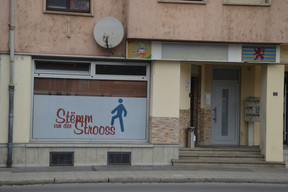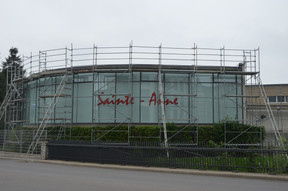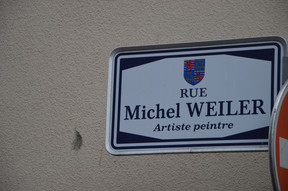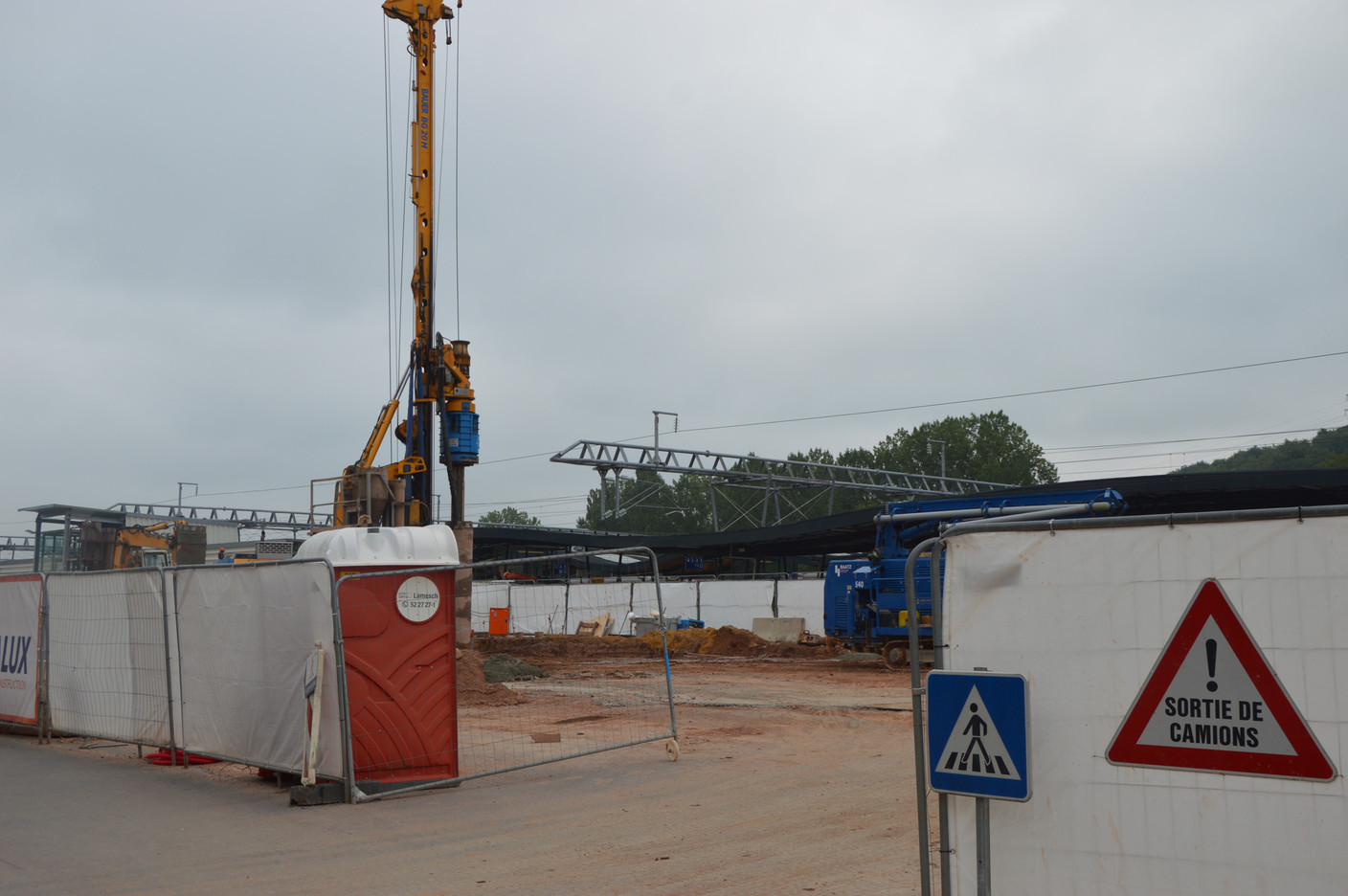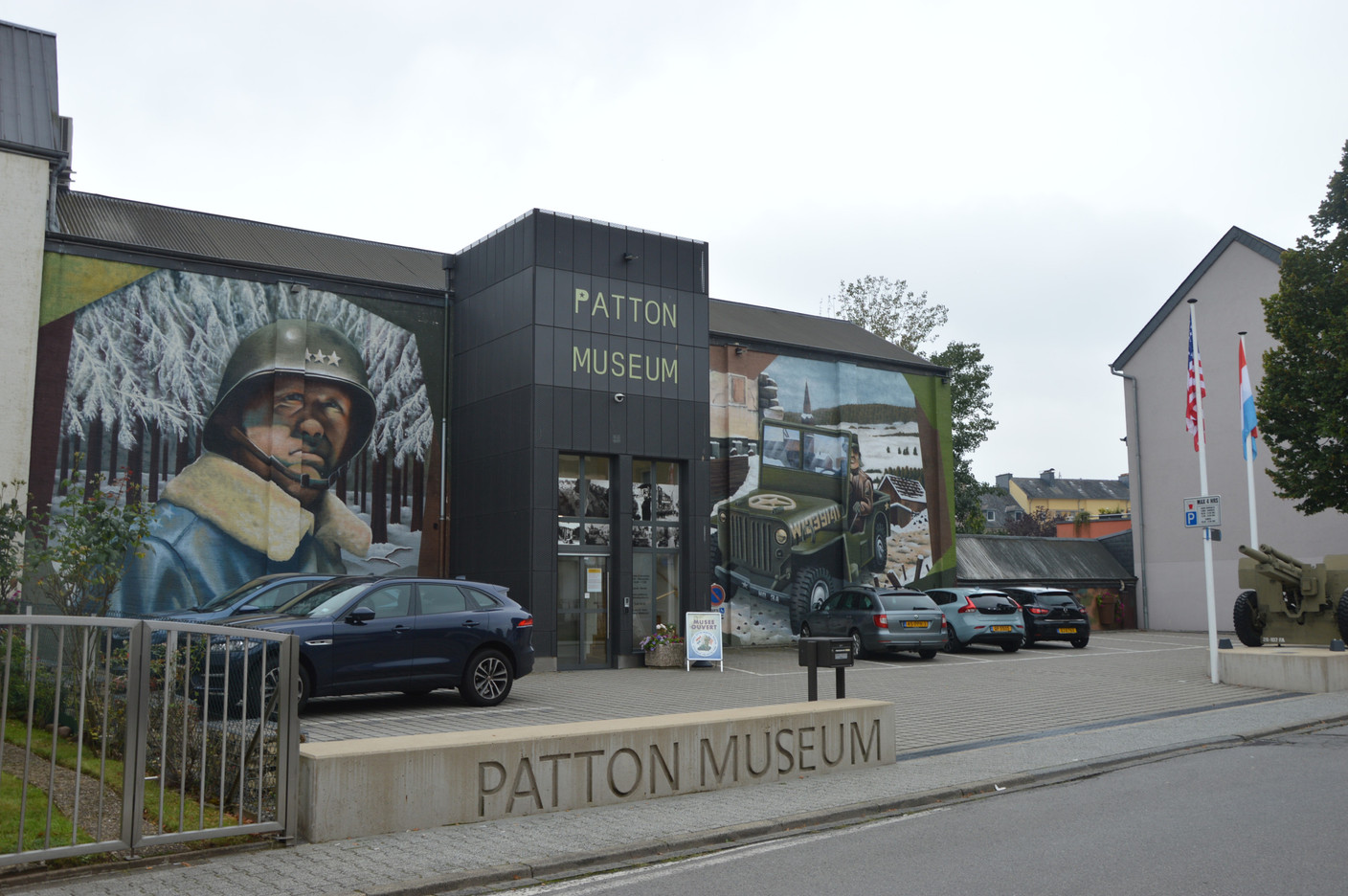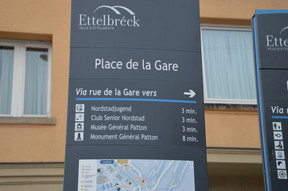The station is the main gateway to the city, and it’s here that hundreds of passengers come and go in the morning. At the moment, they’re accompanied by the rhythm of jackhammers and guided by construction site signs.
Welcome to Ettelbruck’s station district. You’ll have to turn your back to the safety barriers and huge machines to appreciate some pretty façades, like that of the Café Pizzeria Bauerestuff, or that of the Lanners hotel-restaurant, an institution in the town that has been open for four generations.
Less attractive than the more elegant historic centre, the fate of the station area is intimately linked to that of the whole city. The creation of a railway station in 1862 contributed to the development of the entire town. At that time, Ettelbruck was a village rather than a town in its own right. It was not until 1907 that it achieved this status. From 3,000 inhabitants at the time, the town now has 9,686.
At the time, the choice of location for the station gave rise to heated debate, as the town’s archives show. “The route of the railway and the need to cross the Alzette made it technically impossible to build the station in the centre of Ettelbruck. So it was created in its current location, outside the settlement,” it reads. Little by little, the station was transformed.
In 1866, the railway line linked Ettelbruck to Ulflingen, and “from April 1880, another line was built along the Attert, linking Ettelbruck to Steinfort and then to Petingen. The first station building was extended in 1876 and a restoration and half-timbered building was added. The station building was extended again in 1914, after the line had been designed with two tracks from 1913 onwards,” according to the municipal archives.
Ettelbruck has nothing to be ashamed of.
Today, in addition to the few shops that keep it lively, the station remains the nerve centre of the district, which is home to around 1,046 inhabitants, or around 10.7% of the town’s total population. This makes it more of a commercial district than a residential one. The majority of the population is Portuguese, as well as Luxembourgish.
And while in many towns and cities, the neighbourhoods around stations are often synonymous with delinquency, Ettelbruck seems to be spared this phenomenon. Edgar Bisenius spends most days there. Although he lives in the capital, he spends a lot of his time in the north, where he has family ties. “In Luxembourg City, at the station, there has been aggression and crime. Things are calmer here, and we don’t have that feeling at all.”
And in his opinion, the station and what it has to offer are the main assets of the district. “There are trains every 15 minutes or so to Luxembourg, but the quality of life here is different, quieter. Everything is well centred and clean. There’s plenty to do, both for sport and cultural activities. It’s a little cheaper than elsewhere, and the district has retained its human side, so you can walk around without any problems, and it’s still a good place to live. Ettelbruck does’t need to envy other places,” he asserts.
The area is well endowed in terms of shops, catering to all day-to-day needs. The cosmopolitan nature of the population is also reflected in the district’s retail offer, whether in Rue du Prince Henri or Avenue Kennedy, with shops and restaurants of all origins: Syrian, Balkan, Portuguese, Turkish or even Cape Verdean. There are a dozen or so places to eat, and just as many different shops.
When it comes to services, you’ll find everything you need, including an orthopaedic surgeon, a hearing centre, family planning clinics and the Ligue médico-sociale. Just a stone’s throw away, visitors can discover a number of curiosities. In Rue du Dr Klein, the General Patton Memorial Museum pays tribute to General George S Patton Jr, whose 80th Infantry Division liberated the town on 25 December 1944.
More generally, the museum retraces the most significant events of the Second World War in Luxembourg. Its façade was repainted by Alain Welter in 2019. Another personality dear to the city and the district to whom a tribute is paid is the sculptor Michel Weiler, for whom a small street is named.
A district that bears no comparison with Luxembourg City station
A shopkeeper who has been in the area for three years, on Avenue Kennedy, describes it as “a quiet neighbourhood that bears no comparison with the station area in Luxembourg City.” In terms of commercial life, “It’s not the easiest street for shopkeepers. But when the works are finished, the district will develop. When the streets are pedestrianised, it will undoubtedly attract more people,” she believes.
The work being carried out by CFL and the Roads and Bridges Administration should benefit the whole district, and the city and Nordstad in general. In any case, it is being closely watched by residents and shopkeepers, who say they can’t wait to see the results.
The aim is to modernise and develop the station into a multimodal interchange worthy of the name. Work has begun and the station already has an additional (wider and longer) platform, while the original platform has been resized. “With the 23 points installed since 2018 and the two additional tracks, this station, which is one of the largest in the country, has optimum flexibility,” noted CFL in its latest activity report. Also planned as part of the works are improved accessibility for people with reduced mobility and a P+R (with around 430 parking spaces), which will be linked to the new, more modern passenger building and the new bus station.
But the works will extend beyond the railway infrastructure of the country’s second-largest station. The station square will be redesigned and refurbished, with seating and soft mobility features. A 350 metre-long tunnel will be created under the station. Avenue Kennedy will see its traffic slow down and the pedestrian area of Rue Prince Henri will be greatly enlarged. “The general plan is designed to be flexible enough to accommodate a wide range of functions, so that this new strategic location will be able to accommodate a mix of social, community, commercial and economic functions,” explains the construction dossier.
“The Verband project is another key part of this development. It includes not only retail and office space, but also new housing units,” adds the local authority in a recent communication. According to its Vision 2030 project, the station area will become the hub of mobility and creativity.
This article was first published in French on . It has been translated and edited for Delano.









